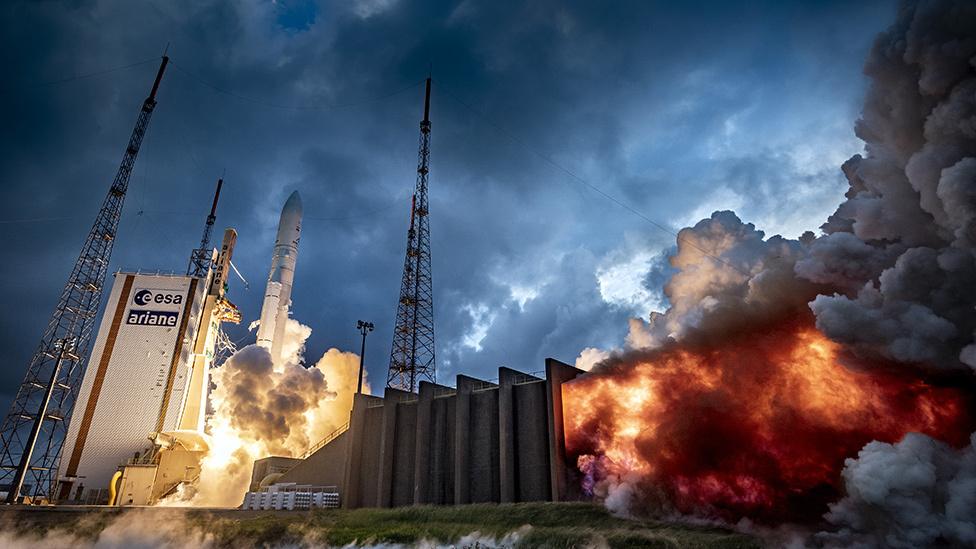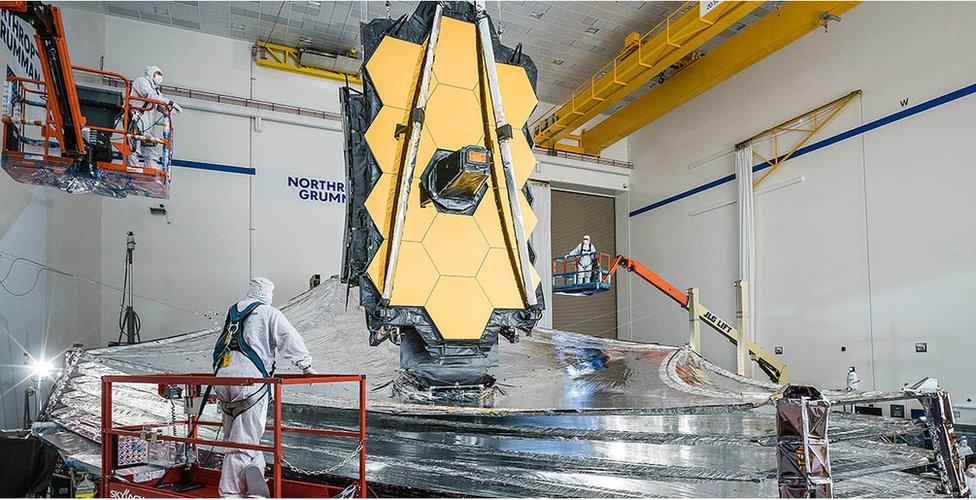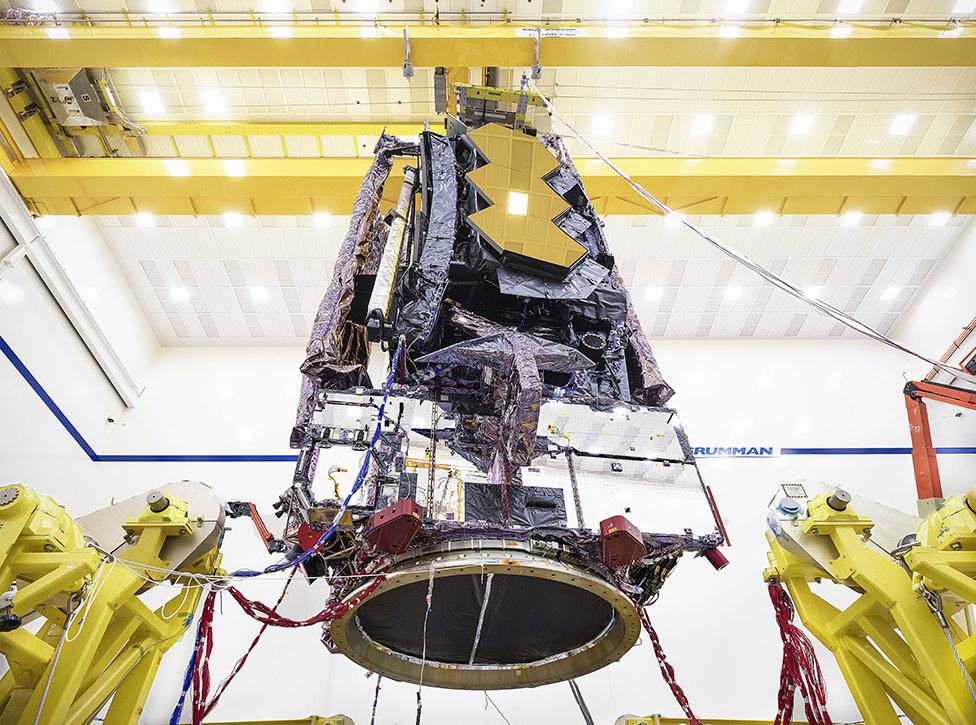James Webb will be the 'launch to watch in 2021'
- Published

The Ariane-5 is coming to the end of its 24-year operation
If the standout rocket launch of 2020 was the flight that took US astronauts back into orbit from American soil, then the major rocket event of 2021 must surely be the launch of the James Webb Space Telescope.
The successor to the mighty Hubble observatory is due to go into orbit on 31 October.
Its mission will be to detect the very first stars to shine in the cosmos.
The carrier rocket will be Europe's venerable Ariane-5 vehicle.
It's part of the deal that the European Space Agency (Esa) struck to get involved with the US space agency (Nasa)-led telescope project.
By providing the launch rocket and some instrumentation, Esa guaranteed European astronomers use of the new telescope once operational.
The workhorse Ariane-5 is nearing the end of its career. Only eight of the expendable vehicles are left, with one reserved for this special flight.

JWST will be the single most valuable payload ever launched by Ariane
Ariane-5 has launched many important payloads down the years but none that has had quite so much time, effort and money invested in it.
JWST will go to the launch pad at Europe's spaceport in Kourou, French Guiana, with a price tag of roughly $10bn. That's the amount it will have cost to design and build, combined with the sum set aside to run the observatory for five years.
"This mission will be the mission of 2021," said Stéphane Israël, the CEO of Arianespace, the French company that markets and operates Europe's Ariane rocket.
"You know, the first contact we had with the Esa and Nasa on this project was in 2002. So, 18 years ago!"
JWST is currently undergoing final testing at the aerospace manufacturer Northrop Grumman, external in California.
"The first equipment for the launch campaign will arrive in [French Guiana] six months before the launch. The satellite itself, which will be 6.6 tonnes, will arrive by boat eight weeks before the launch," Mr Israël explained.
"JWST will be prepared in the [technical] facilities of our partner, the French space agency. The launch duration will be 26 minutes, and you know that the final destination of the satellite will be the famous Lagrange Point."
This destination is a gravitational "sweet-spot" about 1.5 million km from Earth. It's a location in the Sun-Earth system where spacecraft can maintain station by making relatively few orbital corrections, thus preserving fuel. It's also a place that's free from the environmental disturbances that observatories closer to Earth experience, such as intermittent shading and temperature swings.

JWST must be folded to fit on the top of the rocket
After coming off the top of the Ariane, it will be a number of weeks before JWST reaches the Lagrange Point.
In this period, the telescope will work through a series of critical deployments of structures that were folded at launch to allow them to fit on the rocket.
These structures include JWST's 6.5m-wide mirror and its 21m-by-14m, diamond-shaped, multilayer sunshield.
None of this will be the responsibility of Arianespace. Its sole job is to get the flagship observatory safely off Earth and into space.
"We have worked with Esa and Nasa on the overall reliability of the Ariane-5. Nasa has been very demanding. This is perfectly normal," Mr Israël told BBC News.
